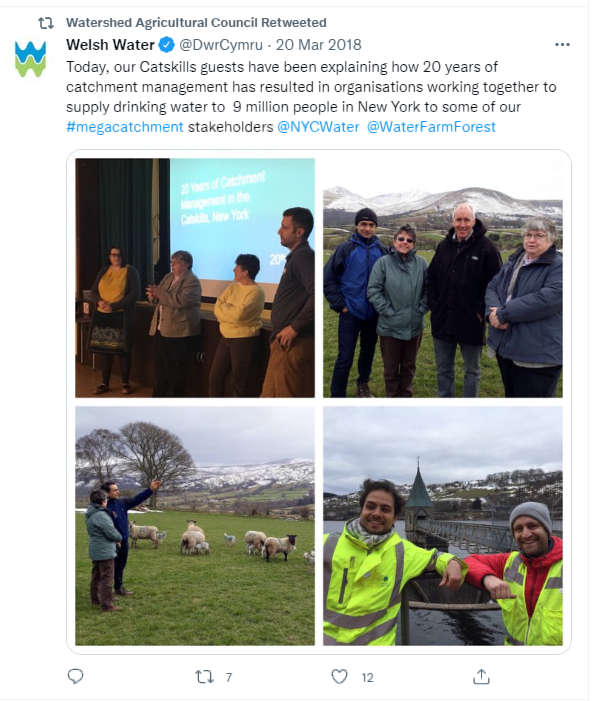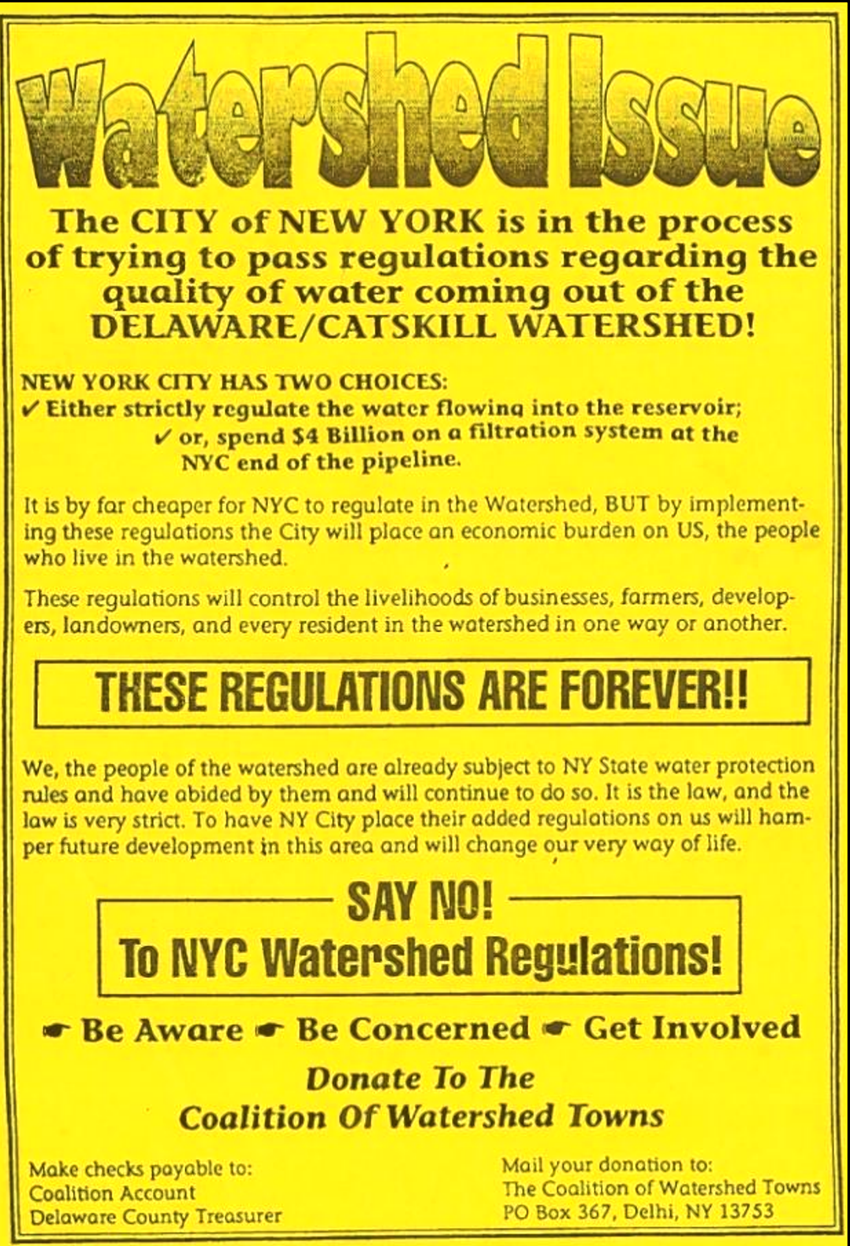![]() I took a week off last week. It was too hot for blogging. For which we must all blame anthropogenic global warming. Then again, it might just have been normal summer weather.
I took a week off last week. It was too hot for blogging. For which we must all blame anthropogenic global warming. Then again, it might just have been normal summer weather.
It certainly was when the rain arrived. So different to when I was a boy . . .
Back then, summer started in mid-March, many over the age of 50 were dead from heatstroke and malaria by the time we celebrated the Feast of Saint Blodwen of Cwmrhydyceirw. And we played cricket ‘frae morning sun till dine’.
Happy days!
♦
BACKGROUND
To get the background for this story – fast developing into a saga – you’d better read Green Man, Red Herring? (20.05.2022) about the purchase, by the self-styled ‘Welsh Government’, for £4.25m, of Gilestone farm, just outside Talybont-on-Usk.
According to the aforementioned ‘Welsh Government’, the farm was bought in order to be leased to the Green Man festival. Yet the Green Man submitted no business plan, and says it has no intention of leaving its current venue at the Glanusk estate, a few miles down the road.
For these and other reasons I suggested the Green Man angle was perhaps a distraction. I’ll go further now and suggest that Gilestone itself might not be the thread to follow if we want to know what’s really going on.
There seem to be two possible ways of explaining it. Both start from the same point.
◊
WATERSHED AGRICULTURAL COUNCIL
And that point is the visit to Wales in March 2018 by a delegation from the Watershed Agricultural Council (WAC), based in the Catskill Mountains of New York State. This trip was organised and hosted by Dŵr Cymru / Welsh Water.
It was arranged to coincide with the Watersource 18 Conference.

This northern reach of the Appalachian mountain chain supplies New York City with its drinking water, and of course NYC wishes to ensure a supply of good drinking water.
As the video below explains, legislation introduced in 1990 meant that water for NYC would need to be more rigorously treated, but one option was prohibitively expensive, even for the Big Apple.
The need to find a cheaper alternative to the $5 – 7bn outlay on a new filtration plant led to the link-up between NYC Department of Environmental Protection (DEP) and Catskill farmers, foresters and others.
Following that visit to Wales in March 2018 for the Watersource conference the next contact was in June 2019, when a party representing Dŵr Cymru visited the Catskills.
There was another US visit later that year. This time a Dŵr Cymru representative and some Beacons farmers went over. Among those who made this trip were Richard Roderick, who farms across the Usk from Gilestone, and Keri Davies of Crai.
Representing Dŵr Cymru was Nigel Elgar, the project manager for DC’s Brecon Beacons Mega Catchment scheme. So here’s another video!
(How many more transatlantic trips would there have been without Covid?)
In December 2019 Roderick and Davies were together again as guests at a meeting of Natural Resources Wales Land Management Forum Agri-Pollution Sub Group.
This was around the time Minister for Environment, Energy and Rural Affairs, Lesley Griffiths (and Gary) started blaming farmers for every bit of crud in every waterway in Wales.
An anti-farmer campaign that resulted in the notorious ‘NVZ’ legislation.
The next step was the formation, in May 2020, of the Beacons Water Group CIC (BWG). Roderick and Davies were among the six directors, as was Charles Weston, who owned Gilestone. But at the formation of BWG – some two years before Gilestone was sold to the ‘Welsh Government’ – Weston gave a Crai address.
Had he already vacated Gilestone? Had it already been bought?
A fourth Founding Father was Anthony Hugh Martineau. He farms land at Llangorse lake owned by the Raikes family of Treberfydd House.
Martineau is also an ‘advisor’ in sustainable agriculture at Black Mountains College in Talgarth. Which is interesting because back in New York State there’s Bard College, another George Soros-backed institution.
And Bard College seems to work with the Watershed Agricultural Council.

Perhaps to complete the circle, Dŵr Cymru is chummy with Soros College, Talgarth. Our water supplier is sponsoring an Ecological Futures Camp in August.
So if you want to learn how to catch and skin an illegally released beaver, and then turn the pelt into a nice pair of slippers for Auntie Ceinwen, get your name down now!
Oh, I can’t wait!
◊
‘WATER, WATER, EVERYWHERE . . . ‘
So, as I suggested in a tweet last week, the events around the Gilestone purchase could be all about Dŵr Cymru getting together with farmers to ensure a constant supply of good drinking water.
But if we were simply talking about clean drinking water, then I might not be writing this. For who could argue against?
There has to be more to it.
Let’s think back to the video we looked at earlier. The one in which we were told that the Watershed Agricultural Council came into being as a result of new and more stringent regulations regarding water quality.
That’s true, though things got off to a rocky start. There was clearly local opposition to what them folks from the big city wanted to do.

Though relations between NYC authorities and Catskill farmers seem to have improved, perhaps because (penultimate paragraph): “Farmers have been given 100% funding from WAC for infrastructure to improve water quality. WAC is trusted intermediary and all work is locally led, science based and voluntary with no regulations.”
By comparison, I get the impression that the ‘Welsh Government’ and Natural Resources Wales hope to use new regulations to bankrupt farmers and free up land.
Though I’m writing about the USA I still don’t understand why Dŵr Cymru needed to go there to learn about clean drinking water. They could have gone anywhere in Europe without the cost and environmental damage of transatlantic flights.
Some might conclude – as I have done – that certain agencies in Wales were attracted to New York City’s watershed model for reasons other than just clean water.
Either way, I’d like to know how or through whom Dŵr Cymru first made contact with those US organisations.
Whatever the answer, it would not justify spaffing £4.25m of public money.
◊
SO WHAT ELSE COULD IT BE?
The Watershed Agricultural Council website has a page on Conservation Easements. A term and a concept with which I was unfamiliar. I found it fascinating.

This is how Wikipedia describes these arrangements.
‘In the United States, a conservation easement (also called conservation covenant, conservation restriction or conservation servitude) is a power invested in a qualified private land conservation organization (often called a “land trust“) or government (municipal, county, state or federal) to constrain, as to a specified land area, the exercise of rights otherwise held by a landowner so as to achieve certain conservation purposes.’
The Environment Act 2021 that comes into effect in England on September 30 allows for Conservation Covenants. Read about it here. Note the references to “carbon offsetting” and “carbon insetting”.
I’m not aware of similar Welsh legislation, but the ‘Welsh Government’ usually follows London’s lead. Often with ‘variations to accommodate local circumstances’.
Let’s go back to the Watersource 18 conference in March 2018. Also attending were New York City Department of Environment’s Water Supply Bureau and, giving the keynote speech, the Catskill Watershed Corporation (CWC).
These bodies remind us that Conservation Easements / Covenants are not the only way for land to be used or acquired for ensuring water quality and other purposes.
The website for the Catskills Watershed Corporation tells us:
‘The CWC was officially born January 17, 1997 with the signing of the landmark New York City Watershed Memorandum of Agreement (MOA) between City, State, Federal and environmental entities and Watershed municipalities. The MOA and associated Filtration Avoidance Determination (FAD), allowed the City to avoid building an expensive facility to filter its Catskill-Delaware Water Supply as long as it proved it could keep this surface supply clean through land acquisition, regulations and city-funded, locally-administered environmental protection programs.’
“Land acquisition . . . environmental protection programs”.
Then, this NYC Department of Environmental Protection document says something very similar (paragraph 5):
‘In the late 1990s, DEP began a Land Acquisition Program to protect water quality in its reservoirs by preserving key parcels of land in the watershed. Since then, DEP has acquired more than 100,000 acres of land in the Catskills, including many tracts that were historically used for agriculture or rented by neighboring farmers.’
“Land Acquisition Program . . . tracts that were historically used for agriculture”.
I guess whether Conservation Easements / Covenants benefit farmers depends on who’s wielding the power.
Statements made and attitudes displayed in recent years by representatives of the ‘Welsh Government’ towards the farming community and the countryside in general make me pessimistic.
◊
BEACONS WATER GROUP
I’m intrigued by the rather mysterious Beacons Water Group CIC. One thing I find odd is that – even allowing for Covid – a Community Interest Company has gained no new members in over two years of its existence.
Is it a closed shop?
Come to that, which ‘community’ does it represent? And in which way? When I checked the BWG entry on the Companies House website, and in particular the Certificate of Incorporation, there, under ‘Objects’, I found what you see below.

It struck me as being rather vague. With no mention of water despite ‘Water’ appearing in the company name. And why ‘visitors’ (before ‘residents’) – is it a tourism group?
There are six directors of the Beacons Water Group.
Two were taken on a trip to the USA by Dŵr Cymru, and ‘debriefed’ on their return by Natural Resources Wales. A third had his farm bought by the ‘Welsh Government’ for a grossly inflated price. A fourth farms land owned by a local squire and is connected to a Soros-backed institution.
The other two directors I haven’t really checked on yet.
It stinks! (And I’m not talking agricultural pollution of watercourses!)
◊
CONCLUSION
We have been lied to about the purchase of Gilestone farm. Especially the reason given for buying it. The Green Man festival is peripheral to these machinations, if it’s involved at all.
Gilestone being bought for an insane amount of money cannot be divorced from the owner, Charles Weston, belonging to the in-crowd Beacons Water Group.
Is Gilestone the first of many purchases of farms close to a watercourse? Though how many farms in Wales are not close to a watercourse!
There may be partnership in the USA between farmers and officialdom but that won’t happen in Wales, where too many civil servants and politicians regard George Monbiot as the ultimate authority on Welsh farming.
What you’ve read here is about water only in so far as water quality might in future be used to appropriate farmland. This explains the attraction of the Catskills model to certain agencies in Wales.
As I’ve suggested, it was no coincidence that the absurd ‘NVZ’ legislation, pretending a highly localised issue is a nationwide crisis, was dreamed up at the very time others were to-ing and fro-ing across the Atlantic.
Because the NVZ regulations are also about land, rather than water.
♦ end ♦

